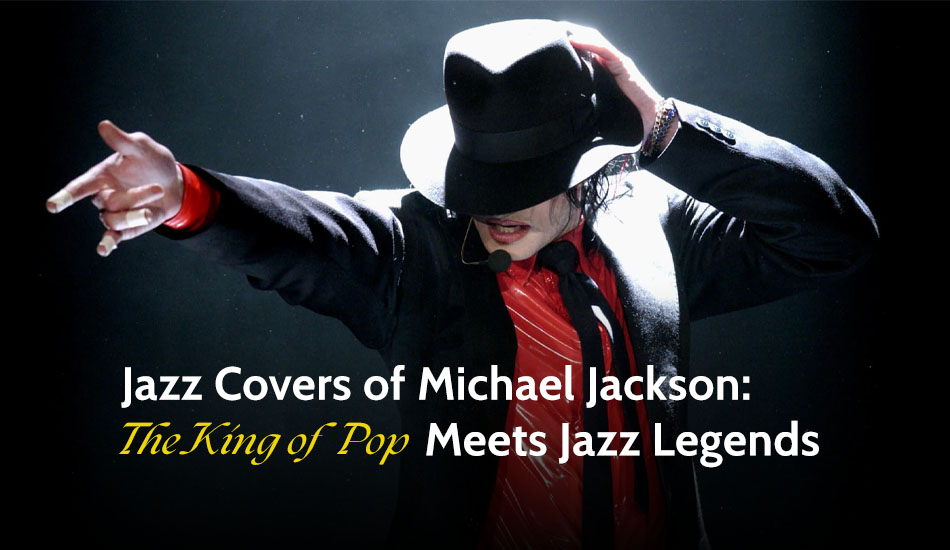
by dynamite | Nov 18, 2024 | Blog
Michael Jackson’s most popular songs have no barrier of time and no barrier of type, proving that he is one of the most effective music artists in history. These characteristics prove that all his songs are enjoyed by everyone on earth, regardless of what type of song it is – it can be popular tracks, dance songs, or slow smoothly textured ballads. His long-limbed melodies and speech-SEND into polymer inflect his bluesy feelings and rhythms for the influence of countless Jazz performers. In today’s edition of Jazz Covers, we take a moment to explore jazz covers of Michael Jackson’s music that offer a fresh perspective on his beloved tracks. These covers breathe new life into Jackson’s songs and highlight his enduring relevance in jazz music.
Michael Jackson’s Impact on Music and Pop Culture
Michael Jackson wasn’t only a singer; he was a pop icon of the century. His music transcended race, color, and creed, and his production style, performing art style, and presentation style revolutionized the world of the music industry. Disks such as Thriller or Bad are, in effect, institutionalized, thus leaving an imprint on pop and every other style of music, including R&B and jazz.
In addition to the versatile lyrics, which are easy to memorize and perform, Jackson’s music is notably expressive and supported by a powerful voice that also encodes emotions in pitch and rhythm. That is why outstanding jazz performers from all over the world are now featuring songs of his creation, producing Jazz Covers of Michael Jackson to reveal the amazing potential of his work.
Why Michael Jackson’s Music Translates Well to Jazz
Thus, one of the reasons that the Jazz Covers of Michael Jackson has been effective is Jackson’s intricate rhythm, melody, and dynamics. Despite pop influences, his music is structurally intricate and well-suited for jazz rereadings. Whether it is the complex rhythm in ‘’Smooth Criminal’’ or the rawness in ‘’Human Nature,’’ these tunes share qualities of jazz that inherently allow for improvisation and expression. The grooves, the choruses, and the soul in Jackson’s compositions are strongly inviting to jazz artists willing to develop new interpretations of them.
Top Jazz Covers of Michael Jackson Songs
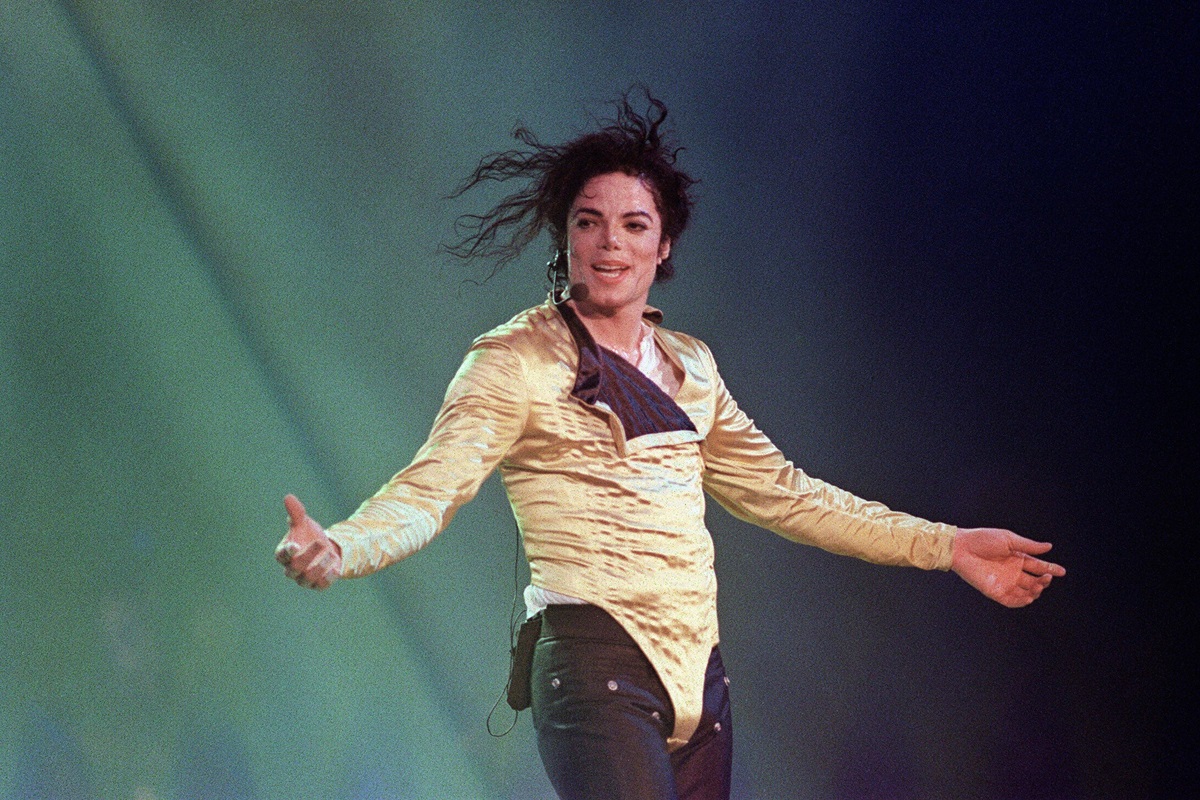
1. Smooth Criminal
Perhaps one of Michael Jackson’s most popular songs, even to this date, is ‘’Smooth Criminal‘’; it becomes even more interesting when interpreted by jazz musicians. As we all know, the song has a unique bassline and heavy beat, and performing artists turn it into a slow jazz number, with the beat and energy never seeming to be lost. The conversion to jazz allows one to play different rhythms and patterns of the beat to create an entirely new sound yet maintain the originality of the inherent worried sound of the song.
2. Thriller
Michael Jackson’s single “Thriller ” is arguably one of his most recognized, as are jazz interpretations of it, which manage to draw out the spooky side of the song. Jazz rendition of “Thriller” is as closely linked to the basic interpretation as the tempo, rhythm, and harmony of MJ’s performance and its contrast to it, the spirit of the song, and its improvement by rich Jazz motives and improvised remarkable Jazzy solos.
3. Human Nature
The track Human Nature is one of the ‘Thriller’ album’s popular ballads, which has been done in many jazz styles. It is easy to analyze the song due to its minor details, making its jazz interpretation possible. In Jazz Covers of Michael Jackson, this song is usually stripped down to its more harmonic elements because artists see this song as a ballad and are, therefore, able to use luxurious saxophone and piano to create an outstanding cover of this song.
4. Billie Jean
Other Michael Jackson songs that can be adapted to jazz include the famous Billie Jean. The bass line is to jazz, and the hook is to hip-hop, and many artists have used the song to go in new directions. SOME slices of jazz are slow, deep, and romantic to the lyrical interpretation, while some turn jazz into bouncy and danceable tunes, proving the genre’s and the song’s elasticity.
5. Rock with You
A perfect example of an MJ’s song that fell under the romance category, “Rock with You,” has a very smooth, slow, and sexually charged. When jazz performers play it, they reveal many smooth jazz possibilities. Thus, they decrease the speed and enrich the harmony and impressions. These covers give a relaxed, close ambiance but still keep it simple, and they have made it one of Michael Jackson’s favorite Jazz Covers in the current world.
The Jazz Artists Redefining Michael Jackson’s Legacy
The great Michael Jackson’s music has always been a favorite among jazz artists, but several have completely reinvented him, or rather, his music with mind-blowing jazz versions. Miles Davis, for instance, with his jazz take on Human Nature, is one artist who helped assimilate Jackson’s music into jazz. Other great jazz artists such as George Benson and Chaka Khan have also weighed their talents into the Jazz Covers of Michael Jackson, making new interpretations of the songs they perform. These artists pay tribute to Jackson and display what jazz is capable of doing, even in regard to the most pop-oriented numbers out there. Consequently, some of Michael Jackson’s Jazz Covers could be classified among the best jazz records of the world.
Conclusion
The charm of Jazz Covers of Michael Jackson introduces us to something familiar in a completely new manner. Jackson’s impact on later generations of artists is undeniable, but there’s something unique about his bond with jazz. His polyrhythmic ideas, passion, and great themes, which are part of his work, are the best base for jazz musicians to open and develop new territories. From the sultry glide of “Billie Jean” to the romantic pulse of “Human Nature,” it was clear that MJ music is alive and will always be remixed in jazzy ways. Therefore, whenever you hear a jazz rendition of a Jackson composition, you should appreciate that the man’s music is timeless. Most of these tracks could fit perfectly into the list of the greatest jazz albums ever.
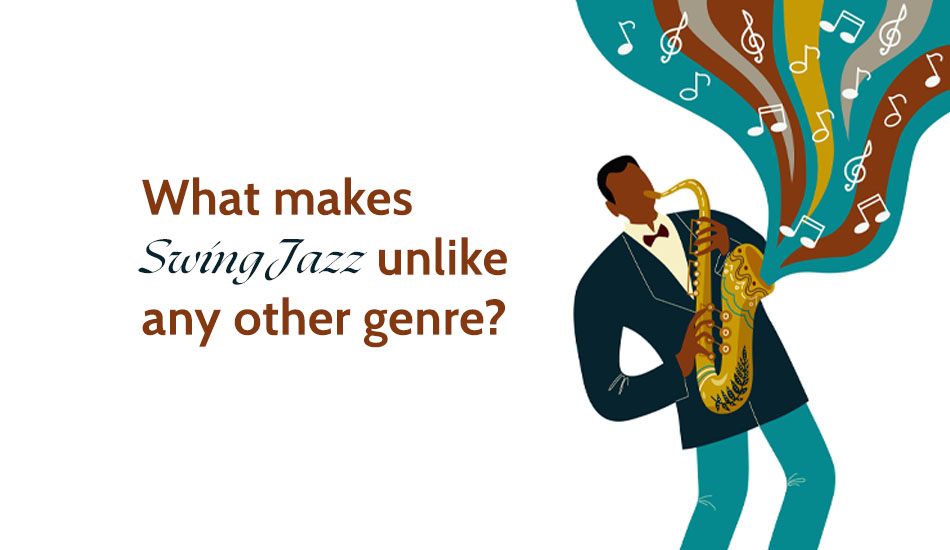
by dynamite | Nov 11, 2024 | Blog
Introduction to Swing Jazz
Swing Jazz first emerged in the 1930s in America to change the musical and culture of it. Due to its fast tempos, accentuated rhythmic displacement, and massive orchestras, it turned into the soul of parties, unifying people on the dance floor and radio listeners. Swing Jazz was the cross-over music that redefined popular music, and Art Jazz also brought new cultural values and new dances to the American musical mainstream. Their impact was deep and abiding.
Its essence can be summed up as freedom and expression; it presupposes equal parts technique and improvisation. It was created in an epoch when global society needed a bright, positive, self-inspiring logo. Governed by the Harlem Renaissance, this music developed in dance halls and theaters, encouraging togetherness, and is still creating young talents in this sphere worldwide. If levels of congruence between Swing Jazz and this proposed model are high, by analyzing its rhythmic offerings, key artists/bands, and cultural contributions, one will gain an even greater understanding of Swing Jazz’s eternity.
The Unique Rhythm and Tempo
Swing, the music that defines Swing Jazz, is characterized by a set rhythm that is syncopated/shuffled. It has this unique rhythm, which starts from somewhere, unlike most of the songs in the earlier jazz music, and this is a nice rhythm to dance to. The swing beat, for instance, being played in drums together with walking bass lines, imparts to the music a bouncing feel or dancing kind of feel. Swing jazz tempo is different from the strict ones of other genres; every swing jazz band and singer is free to breathe life into the beats.
Instrumentation and Ensemble Style
Swing Jazz will be performed by big bands and small combos that comprise brass woodwinds and rhythm sections. Everyone sings – trumpets, trombones and clarinets, saxophones alongside piano, bass, guitar, and drums to make it sound like music fills the entire room. Great big bands, led by Duke Ellington and Count Basie, became iconic orchestras that fascinated the listeners with bright sections and fascinating solos. Smaller combos, on the other hand, stressed the element of improvisation because the Swing Jazz, in essence, was the intimacies of bigger combos. In many signature music album recordings of this era, the impressive unity of style that was characteristic of this genre can be seen.
Famous Swing Jazz Musicians and Bands
Below are the several legends of musicians/bands that defined the progress of Swing Jazz: MOS are Count Basie, Benny Goodman or “king of swing”, and Duke Ellington, who set many trends with their arrangements and performance. Outstanding female artists such as Ella Fitzgerald and Billie Holiday started to gain public attention due to their passionisty rendering of lyrics and perfect pitch. Some of these gifted musicians started as a jazz singer in LA and around the globe, making the history of Swing Jazz seminal.
Improvisation in Swing Jazz
Swing jazz is generally characterized by big bands, set sections, and composed themes, but improvisation is still a critical factor in the subgenre. Vocalists often take turns and rush to center stage, specializing in impassioned, impromptu solos as a demonstration of self-imagination and talent. The flexibility of musicians and the freedom to improvise are the reasons Swing Jazz is never stagnated and boring. This tendency eliminates a significant amount of planning and makes a show emotionally charged for both performers and audiences.
Swing Dance Culture
Swing Jazz is characterized by one of the most easily recognizable and long-lived features associated with dancing. Like Lindy Hop, Jitterbug, and Charleston, the so-called jitterbug dances developed with the music to allow the body to relax into the sound, which reflects the feel of the period. Swing dance halls sprouted throughout the United States and evolved into entertaining social venues where people of color and whites enjoyed swing music and dance. Swing dance culture to this day is considered a subculture that is actively and continues to be met to popularize this kind of dance.
Swing Jazz in Modern Music
Swing Jazz does not have its place in contemporary society; rather the music style had its hay day in the Golden age of Swing Jazz. Today’s jazz, pop, and even electronics get their impulses from rhythm and harmonic swings. Artists today make it their business to innovate Swing Jazz and integrate some of the styles into new compositions to guarantee their prolonged existence. Although employed in signature music albums or mentioned by a jazz singer in LA, the spirited class of Swing Jazz is still heard today.
Conclusion
Swing Jazz is not just music; it is a cultural asset that defines music, dance, and society in its contemporary society. These elements have included dynamic beats, impressive improvisations, and a general display of joy that has enthralled generations of listeners and dancers alike. When the individual components of Swing Jazz are understood, it is possible to see why this musical development has left such an important legacy and why many pieces can evoke such intense emotions.
Swing Jazz reminds an astonished world that sometimes it is necessary to move slowly, dance the feeling, and embrace the bond that music creates. It also aims to remind people of the capabilities of the art of overcoming all barriers and giving. Sometimes, it is necessary to unite and rejoice; This is why art remains a part of modern music and culture.
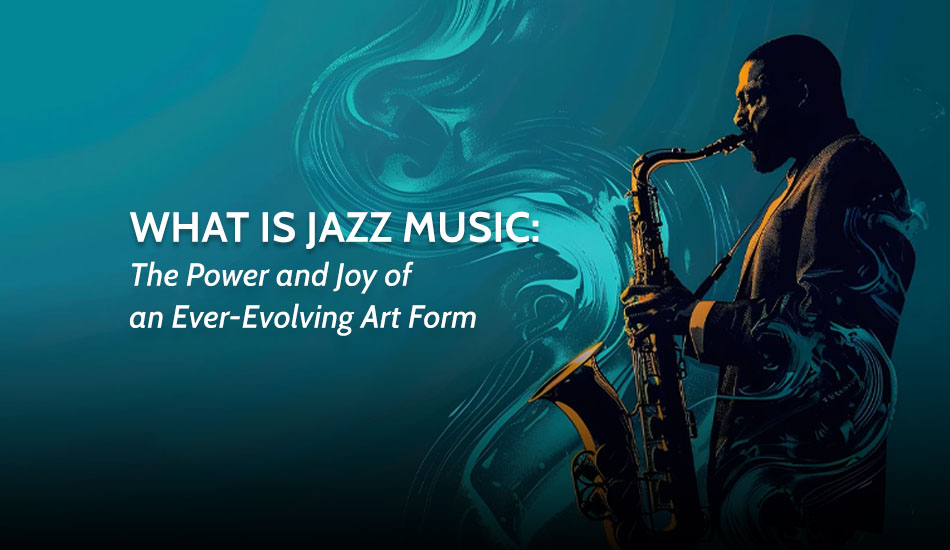
by dynamite | Oct 28, 2024 | Blog
What is Jazz Music? This question can lead to the most fertile territory of world’s musical culture, which enriches people timelessly. When you exaggerate the definition of Jazz, you could say that Jazz is not only a type of music; instead, it is feel, communication, and liberty. From African American roots and influenced by several others jazz has emerged as music of self and of group. It has longevity because despite the changes that occur it is always able to modify while keeping those crucial characteristics. No matter if it is the best jazz songs or a new album in jazz, it is a voyage, which is good to take.
What is Jazz Music?
In its simplest terms, jazz is a style of music that encourages improvisation, syncopation and rhythm and incorporates components of blues, ragtime classical and swing. It’s music by which performers can play around and dare even sometimes within still holding to certain structures in the song. With its roots starting in the late 1800s and early 1900s jazz music emerged from the streets of New Orleans, quickly surrounding the entire United States, and soon the rest of the world.
From black African roots, Jazz embraced a new idea in the application of acoustics integrating the harmonic functionalities of the European society. It is progressive, progressive with the times and revolution in some ways yet it remains conservative.
The Value of Music
Music is known to affect people’s emotions and psychology and jazz music does all of this and much more, it awakens creativity, and defies conformity while bringing happiness. Jazz is rewarding in both capacities for the performer as well as for the listener. But as you delve deeper, you find yourself making sense of why the best of the songs continue to be played to this day and why artists continue to infringe new albums into this class of music.
Jazz is a Fundamentally Democratic Style of Music
This is not just a figure of speech because jazz is all about interaction. And because rock originated from different genres of music, coupled with the structures of the current genre which allows each musician to bring their own, makes this sort of art form very democratic. At least three, four, or even more people in a band can explore various styles and answer each other spontaneously. They pointed this form of conversation gives a musical format to the entire conversation and everyone has their part to play. Jazz as a subject reinforces the principles of democracy, especially listening and working together.
Jazz is a Fundamentally Diverse Style of Music
Jazz music is about differences, it is about a free spirit. The genre is a mix of cultures, influential people, and important ideas. It incorporates rhythms of African origin, harmonies of European classical composition, and melodies from blues and folk tunes. Jazz has also grown to develop many countries and cultures; it can be Brazilian Bossa nova or French gypsy jazz. We’ve seen that the diverse nature of jazz can be summarised by the fact that it is not merely a form of music that incorporates diversity as part of its constituent features, but rather, it is with diversity that jazz continues to develop and thrive.
Jazz is a Fundamentally Creative Style of Music
Jazz thrives on creativity. Standards are ever-evolving, and musicians mix genres, then creatively ‘jam’ all at once. Not surprisingly, while painting free improvisation is an important element of jazz music as every single musical mistake, any unexpected turns, and, of course, an individual approach to performance is allowed in jazz, unlike in other musical genres. It enlightens that there is no correct method for enjoying or performing jazz. Both are perfectly right, and that openness is the sole reason why the genre remains vital and relevant.
Jazz is a Fundamentally Life-Affirming Style of Music
Jazz, to be more precise, and celebrating life in all its forms is essential. In a dance of a big band tune to the cry of a blues song, jazz is like a document of human thing in its sweets and sour. It reclaims passion, emotions and instinct as being valid ways of being in the world.
Jazz is Uniquely Fun, Challenging, and Enriching
Music, especially jazz is not something that is heard, but is an interaction of several levels of a person. It is enjoyable because it moves in a swing like manner, it is difficult because its design is compounded and it is rewarding because it is as deep as one wants to go. Whether you are an instrumentalist attempting to get through bars or a listener struggling to make sense of a solo, jazz never lets you fall asleep. It never lets the genre alone without challenging you to ponder, to embrace feelings and to develop, They learn when you are searching for the best jazz songs, or when you are looking for a new jazz album.
Conclusion
As a result, the question: What is Jazz Music? Not only is it a type of music, it is an altogether lifestyle. Yet, jazz is free, distinctive, innovative, and all about living. It unites populations, it makes us question things, and where possible it is a source of happiness in its randomness.
What you discover about jazz is that it is a music, that grows, expands, and develops in many positive ways for both the listener and performer. Whether you’re dipping back into an OG album, or diving into a new jazz album, the path of jazz is one that does not have an end.
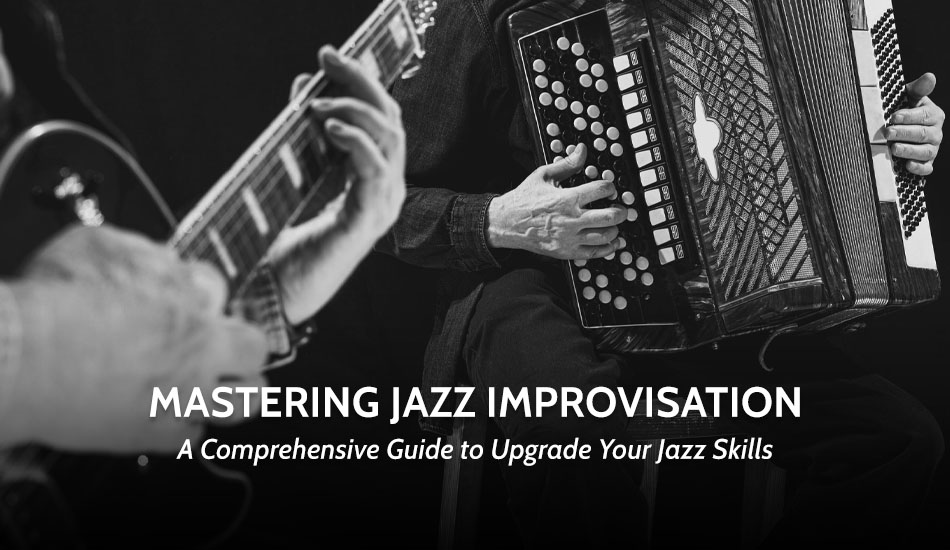
by dynamite | Oct 21, 2024 | Blog
Any musician wanting to be more creative and be an individual must learn the skill of Jazz Improvisation. It provides a means for the spontaneous musical expression of the modern jazz singer to express emotion or to express an idea in real time. Even if you’ve dabbled in jazz before, learning the foundations of jazz improvisation can be a game changer both as a new and veteran player. In this complete learning guide, we will discover the basic tools of jazz harmony, functional approaches, and implementing effective practice strategies to help you become a confident improviser.
Jazz Harmony
Jazz harmony underlies a true understanding of jazz improvisation. The framework for the spontaneous musical ideas that musicians can create through Harmony. Beyond that, having a strong understanding of harmony will help you see your way through complicated chord changes and assist you in speaking musically with other players.
Step 1: Basic 7th Chords (The Building Blocks of Jazz Music)
If you are about to pay your attention to jazz improvisation, you must first get acquainted with 7th Chords. The chords in these patterns are very important in jazz and form the basis of other harmonic structures. Here’s a breakdown of the primary types of 7th chords:
- Major 7th Chords: It can be root (Cmaj 7: C E G B) with third (C maj 7: C E G B), perfect fifth (Cmaj 7: C E G B), and major seventh (Cmaj 7: C E G B).
- Minor 7th Chords: It consists of a root, minor third, perfect fifth, and minor seventh (e.g., Cm7: C-Eb-G-Bb).
- Dominant 7th Chords: The root, major third, perfect fifth, and minor seventh (C7: C E G Bb) may or may not be considered to form the basic chord progression.
- Diminished 7th Chords: It contains a root, minor third, diminished fifth, and diminished seventh (e.g., Cdim7: C-Eb-Gb-B).
Playing these 7th chords in various keys and inversions will prepare you for your improvisation and get you tuned in to the harmony.
Step 2: Scales (aka. Pitch Collections)
Once you have 7th chords down, you move on to learning different scales. Without scales, we have literally no way of improvising; they’re important because they are the notes you can play over chords. Here are some essential scales to master:
- Major Scale: The foundation for much of Western music, consisting of seven notes (e.g., C Major: C-D-E-F-G-A-B).
- Minor Scale: It sounds darker because of the seven notes (A Minor: A-B C D E F G).
- Pentatonic Scale: A nice five-note scale that fits well over a lot of chord progressions (e.g., C Pentatonic: C, D, E, G, A).
- Blues Scale: Another name for a pentatonic scale with an ‘added blue’ note (for example, the C Blues Scale: C-Eb-F-F#-G-Bb).
As you explore these scales, practice playing them over different chords and progressions to see how they fit harmonically. This exploration will greatly enhance your jazz improvisation skills.
Step 3: Guide Tones and Voice Leadin
Guide tones: Guide tones in jazz are a description of those essential notes that distinguish a chord’s character. The 3rd and 7th degrees of the chord are pretty common in these notes. These notes can be used to focus on since playing them will help you create a smooth transition from one chord to another, and, in turn, your improvisation will sound more cohesive.
Voice Leading Techniques: Voice leading is the act of moving smoothly from one chord to the other—not jumping, but rather going from one to another—without too much distance between notes. The sound created from this is more fluid and connected. Let’s use an example: say you’re moving from a Cmaj7 to an Am7 chord, the E (3rd of Cmaj7) resolves to the C (root of Am7) and B (7th of Cmaj7) to the A (root of Am7).
By learning the basic foundation of melody voice leading, you will be able to make melodic and harmonically rich lines.
Step #4: Jazz Chord Progressions
Jazz’s chord progressions are its own thing. By learning common progressions, you will become more familiar with what’s about to come and, most importantly, be able to improvise upon the changes you hear. Here are a few common progressions to practice:
- ii-V-I Progression: Its most common progression moving from the tonic (I) to the relative minor (vi), to the minor (ii), to dominant (V) is a popular progression in many standards. In C Major: Cmaj7-Am7-Dm7-G7.
- I-vi-ii-V Progression: A popular progression used in many standards, moving from the tonic (I) to the relative minor (vi), then to the minor (ii) and dominant (V). In C Major: Cmaj7-Am7-Dm7-G7.
- Cycle of Fifths: The chord moving through the cycle of fifths as a progression creates sweeping harmonic movement. For example, C-F-Bb-Eb-Ab-Db.
By practicing these progressions and improvising over them, you will gain confidence in navigating various harmonic landscapes.
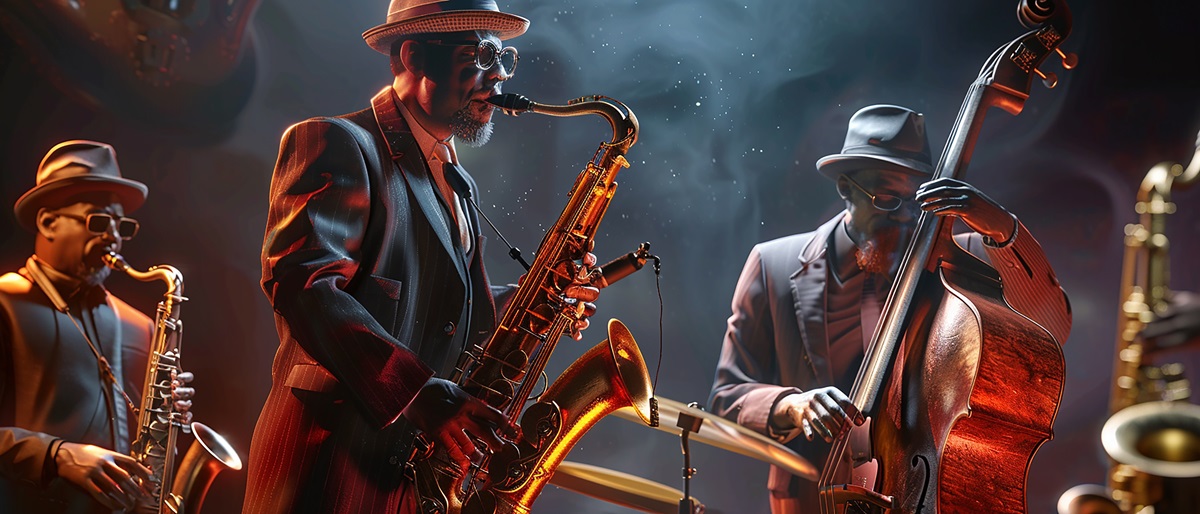
Jazz Improvisation
With that under your belt, you’re ready to go beyond that and get into various techniques to take your jazz improvising to the next level.
Setting Up Your Jazz Practice Sessions for Success
To improve it is essential to create an effective practice routine. Here are some tips for setting up your practice sessions:
- Define Your Goals: Decide, in advance, what your goals will be for each practice session. No matter what, when you have clear goals, you will stay focused.
- Balance Your Focus: Set aside some time to practice different things like technique, repertoire, and language of jazz improvisation. For example, the scale for 20 minutes, a jazz standard for 20 minutes, and 20 minutes on improvisation exercises.
- Use a Metronome: Once you get a grasp of jazz break, practicing with a metronome will give you a sense of timing and rhythm to develop, very important for jazz musicians.
“The Big 3” Things You Need to Practice to Improve as a Jazz Improviser
- Technique: Developing your technical skills is vital for fluid improvisation. Regularly practice scales, arpeggios, and specific exercises to build dexterity and strength in your playing. Include finger exercises, interval training, and alternate picking to enhance your overall technique.
- Jazz Repertoire: Expanding your repertoire by learning jazz standards will provide you with various contexts for improvisation. Aim to learn at least 10-15 standards that you can play comfortably. Pay attention to the melodies, harmonies, and common progressions within these pieces.
- Jazz Language: Immerse yourself in the jazz language by transcribing solos from great musicians. Focus on iconic players such as Charlie Parker, John Coltrane, and Miles Davis. Analyzing their phrasing, rhythm, and vocabulary will help you understand how to build your improvisational voice.
Creating an Action Plan for Quicker Jazz Improvement
To expedite your progress, create a structured action plan that includes:
- Daily Practice Schedule: Dedicate specific time slots each day for practice, ensuring a consistent routine.
- Short-Term and Long-Term Goals: Set achievable short-term goals (e.g., learning a specific scale) and long-term goals (e.g., performing a jazz standard confidently).
- Track Your Progress: Keep a practice journal to record what you’ve worked on, what you’ve achieved, and areas for improvement. This will help you stay motivated and accountable.
LEARN HOW TO IMPROVISE ON YOUR FIRST JAZZ STANDARD
To apply everything you’ve learned, choose a simple jazz standard and start improvising. Begin by playing the melody until you feel comfortable, then move on to improvising over the chord changes. Here’s a step-by-step approach:
- Analyze the Song Structure: Familiarize yourself with the form, key, and chord changes. Understanding the structure will help you navigate the piece more effectively.
- Outline the Chord Changes: Write down the chord changes and identify which scales work over each chord. This will serve as a reference while you improvise.
- Experiment with Simple Ideas: Start with simple phrases and motifs, gradually building complexity as you become more comfortable. Don’t be afraid to repeat phrases or play with rhythm and dynamics.
- Record Yourself: Recording your practice sessions can provide valuable feedback and help you identify areas for improvement. Listen back to your improvisation and take note of what works and what doesn’t.
- Seek Feedback: Share your improvisation with peers or mentors and ask for constructive criticism. Engaging with other musicians will provide new insights and perspectives.
Conclusion
Mastering jazz improvisation takes time, dedication, and practice, but the rewards are immense. By understanding jazz harmony, practicing essential techniques, and developing a solid action plan, you will become a more confident and expressive musician.
Remember, the journey of improvisation is a continuous learning experience, so embrace the challenges and celebrate your progress. With persistence and passion, you can unlock the true potential of your musical expression through jazz! Don’t forget to explore jazz music songs for inspiration, and keep an ear out for a new jazz album to push your skills further!
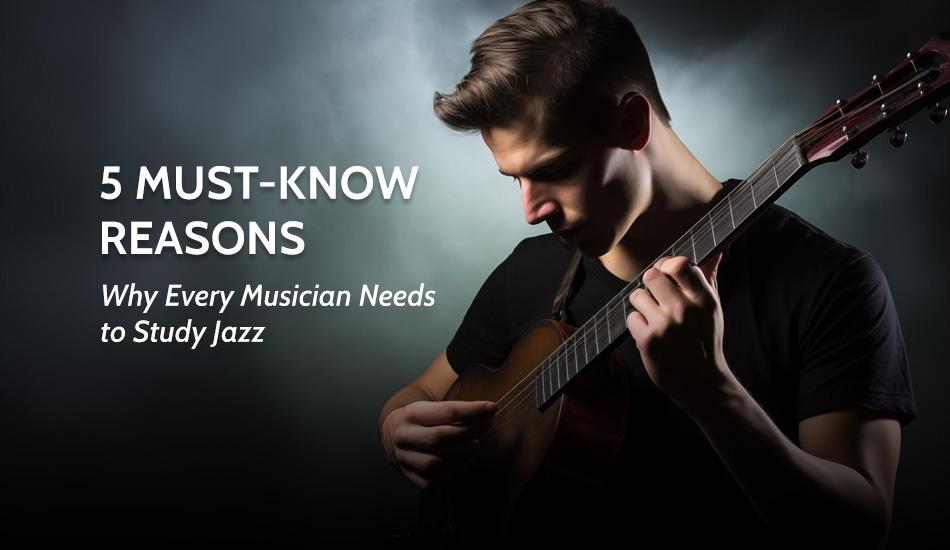
by dynamite | Sep 20, 2024 | Blog
All musicians, no matter what kind of music they perform, want to develop themselves. As with the other styles, jazz entails its lessons, but learning this particular style is arguably the most eye-opening for any musician. In addition to improving theoretical input, jazz proves to be an effective form of training in improvisation, practical performance of instruments, and practical recording of the ear. In this blog, I will list five powerful arguments as to why any musician should study jazz and how, with the help of this great genre, you can take your musicianship to the next level.
What Makes Jazz a Unique Genre?
Jazz is unique because of the style it portrays. It’s really about having multiple layers with independent voices with more complex harmonies, a more liberated rhythmic structure, and melodic invention. Jazz musicians are creative artists who have learned how to create from scratch in an instant and different contexts and different circumstances. In its essence, jazz requires knowledge of patterns of music while it also encourages improvisation and the musician’s take on a song. All the qualities that have been mentioned above make jazz the jazz ultimate genre for a musician who wants to develop himself.
5 Reasons Why Every Musician Should Study Jazz

1. It Builds Harmonic Knowledge and Expands Music Theory
Jazz is rich with harmonic ideas, and is full of colorful chords and interesting arranging of sequences. I would like to point out that 7th chords, extensions, and alterations will help you to grasp the concept of how chords are constructed and related. This is another thing you are likely to learn when you study jazz; you are going to learn diatonic and non-diatonic harmony more, which will change your perception of music theory.
It makes you very flexible when it comes to improvising; you would like to sing jazz music songs, play rock, pop, and blues, or even use the instruments to sing different songs. This harmonic knowledge is then used as a basis for improvisation and composition, as well as for a better understanding of music in general.
2. Jazz Teaches You to Improvise and Adapt
The beauty of jazz and its foundation is in how it relates to the concept of improvisation. It challenges musicians to act spontaneously, relying on the instincts, talent, and imagination of performers. Once you start practicing jazz, you will see how you play without the help of sheet music, and you are free to improvise even during the next five minutes.
This skill, however, is not limited to jazz and can be of great help in any kind of music. One of the benefits of being able to improvise is that it gives musicians more confidence, and you become that much more flexible as a musician whether you’re playing live on stage, recording in the studio, or playing with other musicians.
3. Jazz Makes You More Skilled and Proficient with Your Instrument
Jazz is not an easy genre to perform, especially when it comes to the improvisation of the songs. This is because it’s highly insistent on rhythm, melody, and harmony measures that would see you practicing your instrument for countless hours at a go. Still, when you practice enough and know what you are doing, you realize that jazz helps you become a much more efficient and confident musician. Jazz music will challenge a musician to the maximum by utilizing the instrument by playing fast tempos, close rhythms, and difficult harmonic patterns.
This is because as you work your technical ability while practicing jazz, you will find it easy and almost natural to switch to other genres, from the best jazz songs to rock or pop.
4. Jazz Will Make Your Ear Stronger
A good musical ear is probably one of the most important gifts one can have for music, and jazz couldn’t have taught this better. Jazz musicians are taught to play by ear rather than reading notes on a sheet of paper where they learn melodies, chord progressions, and even entire solos.
When you study jazz, l also enhance your understanding of harmony, melody, and rhythm as you realize the need to put more effort into creating new lines, grooves, and sounds. As one learns to practice the jazz standards by ear, one develops an improved sense of hearing and therefore a better understanding of the music being played.
5. It Will Help You Become a Better Composer
It is not a secret that many of the most beautiful melodies ever written come from jazz standards. Specifically, if you study jazz music, you will be introduced to several composing styles that are universal to any type of music. Jazz shows a student how to approach chord connections musically to create outside of diatonic means, which extends the boundaries of composing.
Through the use of these compositional ideas, you will be able to come up with better and more complex melodies, hence enhancing the quality of your productions in the chosen genre.
Conclusion
Thus, the decision to study jazz can open many new opportunities for musicians. With an emphasis on harmony, improvisation, and creativity, jazz will help you become the best person that a musician can be. Apart from the mere information-processing skills, it will improve your ear for music and will let you into the world of more varied composers. Whether you play jazz music songs or explore other genres, jazz will equip you with what is needed.
Take on the experience, get lost in the jazz scene, and get ready to witness a rise in your musicianship.
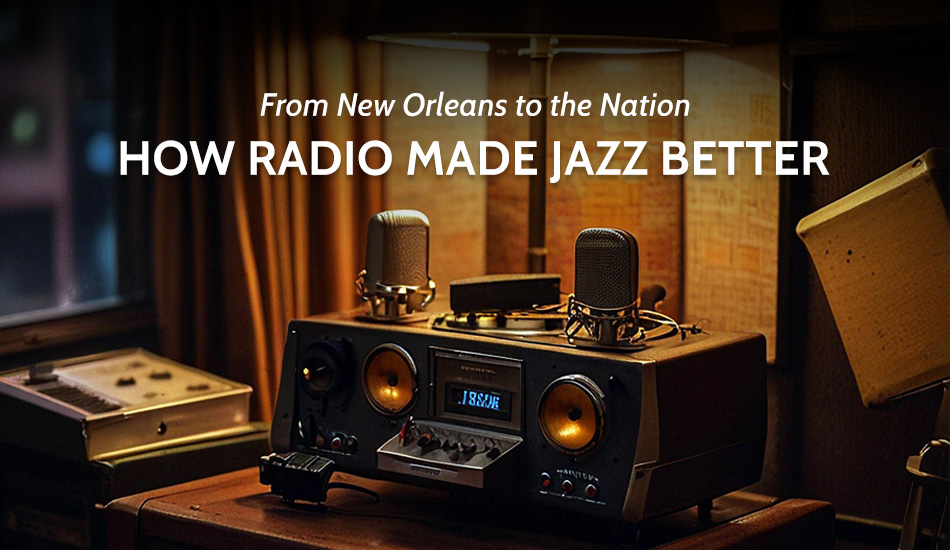
by dynamite | Sep 15, 2024 | Blog
Jazz as an entertaining and complex type of music with remarkable improvisation has captivated audiences for decades. This is why it is important to explore how radio made jazz better, helping it spread across the world. The greatest of all jazz songs originated at the beginning of the twentieth century and originated in New Orleans, the birthplace of jazz. From there, jazz’s story becomes entwined with the story of radio, an invention that radically changed the way people consumed music and which went a long way towards making jazz a national institution.
Background Information
The birthplace of jazz music is widely recognized as New Orleans. This vibrant city, with its mix of African, Caribbean, and European influences, created the perfect setting for the rise of jazz. In the early 1900s, musicians like Louis Armstrong and Jelly Roll Morton pioneered a new sound that blended blues, ragtime, and brass band traditions. This was the dawn of what would become some of the best jazz songs in history. As jazz developed, it traveled up the Mississippi River, reaching Chicago and New York, where its popularity exploded.
The origin of jazz music is well known to have originated in New Orleans. Jazz was born in one of the most colorful and cultural cities in the world that influences Africa, the Caribbean, and Europe. Around the first decade of the twentieth century, clarinetists Louis Armstrong and Jelly Roll Morton introduced the new style by incorporating elements of blues, ragtime, and even brass bands. This was the onset of some of the outstanding jazz songs, which the world would come to enjoy in the future. This BIG idea is how the jazz context emerged and progressed, and in the process came up to Chicago and New York, where it gained immense recognition. However, the true breakthrough came during the Radio Age, a time when technology played a key role in broadcasting jazz to a much larger audience.
The Radio Age
The Emergence of the Great Depression
The many challenges of the 1930s began with the Great Depression, an age of drought and scarcity that touched the lives of most Americans. For many, it became a luxury that they could no longer afford—the luxury of live music. However, the radio became part of every home, people could listen to it and also be entertained by it, as well as feel relieved to have some time off from their problems. This was also when some of the most popular jazz songs started to go beyond the cities and reach consumers even in the rural regions, thus turning into the American tradition.
Radio Takes Over
Jazz was mainly popularized through radio during this period. Radio stations had jazz music continuously playing, and so millions were always exposed to its catchy tunes. Radio played a significant role in giving fame to jazz singers such as Duke Ellington, Count Basie, and Billie Holiday. To this medium, what started as a marginalized musical genre in the birthplace of jazz music transformed into a covered national craze.
Technological Advancements and the Jazz Revolution
Inventions that Made Jazz Clearer
The advent of new technologies such as the ribbon microphone and vinyl resin discs greatly improved the sound quality of radio broadcasts, making jazz music clearer and more enjoyable for listeners. These innovations helped elevate the best jazz songs to an even wider audience, as the crystal-clear sound brought the energy and spontaneity of live performances into people’s homes. Radio made jazz better by enhancing its clarity and reach.
The Jukebox and Disc Jockeys
The invention of the jukebox further democratized music. Jukeboxes allowed people to select their favorite songs in diners, bars, and dance halls, making jazz music more accessible. Around the same time, the rise of disc jockeys (DJs) began to influence how music was curated and shared with the public. DJs played a critical role in promoting jazz and introducing audiences to new artists and records.
Jazz Music and the Youth Culture
Let’s Dance: A Cultural Movement
Jazz soon emerged as the music of the young generation. From swing music in the 1930s and the 1940s, youth in America started to go to ballrooms and dance halls. This development was complemented by the Benny Goodman radio show, a show that was titled Let’s Dance. Goodman’s show introduced the best jazz songs to the nation and provoked a youth passion for swing dancing fervor by having live jazz performances transmitted in homes nationwide.
Widespread Exposure
Jazz music was given entrance to the mainstream through what were radio, jukeboxes, and live broadcasts all in one cell that saw the music get to heights that had never been experienced before. Jazz music, which was once a part of the streets and nightclubs of the birthplace of jazz music, had penetrated every corner of the country. The genre’s greatest performers and most beloved songs became household names, proving how radio made jazz better by exposing it to the masses.
Record Sales and Live Broadcasts
Increased Record Sales
As the dance became more popular, record sales boomed, and with them the demand for recorded music. People wanted to have their copies of the best jazz songs, and thus, there was an increase in the production of jazz albums. Artists who depended on live performances as their source of income, saw a new channel arise: sales of records, which had their music reaching beyond their followers’ neighborhoods.
Live Broadcasts
Radio also enabled the broadcasting of live jazz performances, and as such, millions of jazz enthusiasts could listen to the live performances. This enabled fans to watch the performances conducted during jazz concerts in a very free-spirited manner without actually having to attend the concerts. These live broadcasts assisted in establishing the cultural and historical importance of jazz music and provided the first exposure to a significant number of fans to some of jazz’s most prominent talents.
Conclusion
The fusion of technological innovations and the irresistible glamor of jazz was instrumental in the evolution of a historic period in music. Starting from New Orleans, which was the birthplace of jazz music, it opened doors for the music towering across America through the radio and jazz was no longer a concept but a trend. Through radio, phonographs, jukeboxes, and live broadcasts, the best jazz songs were brought to many households and thus jazz music was integrated into American society. This wide coverage not only expanded the coverage of the genre but also made certain that jazz would always create a mark in both the musical business as well as society.
Nonetheless, it is impossible not to admit that the tradition of jazz is present even in the present day. Jazz remains an essential part of modern music, as evidenced by the creativity, improvisation, and emotionality involved in the creation of most of today’s contemporary pieces. Whether in concert or through recordings, on stage or for streaming and forever, jazz continues to seep into society. The never-wearing allure of jazz, which started from its place of origin and developed with the advancement of technology, is still remembered through the genre to encourage successive generations with liberty and freedom.









